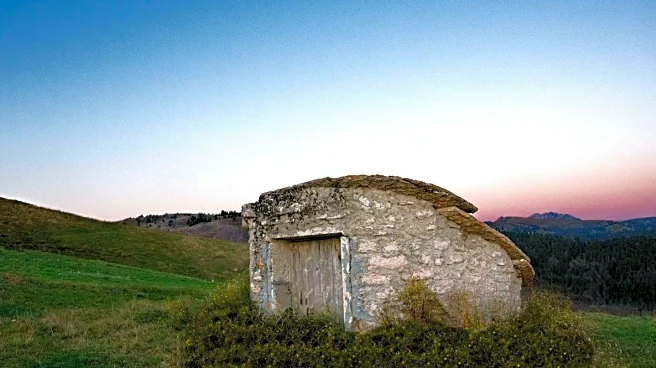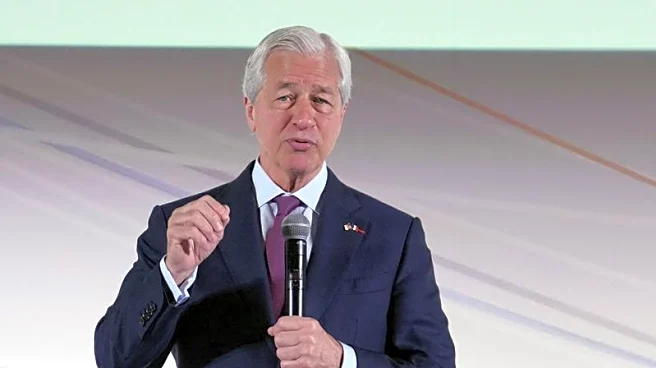What is the story about?
What's Happening?
The site known as the Führerbunker, a subterranean bomb shelter built by the Nazis to protect Adolf Hitler during World War II, has been transformed into a parking lot in Berlin. This transformation was part of efforts by East German authorities to reduce the site's mystique and prevent it from becoming a memorial to Hitler. The bunker, originally located beneath the Reich Chancellery, was destroyed and buried under the parking lot to discourage dark tourism. Despite its historical significance, the site now attracts tourists interested in dark tourism, a form of sightseeing focused on places associated with death and disaster.
Why It's Important?
The transformation of the Führerbunker into a parking lot reflects Germany's ongoing struggle to confront its dark past, known as Vergangenheitsbewältigung. This effort is part of a broader initiative to memorialize victims of the Nazi regime while avoiding glorification of its leaders. The site serves as a case study in the economics of 'repugnant markets,' where societal distaste for certain activities influences market dynamics. The parking lot's existence highlights the tension between historical preservation and the potential for sites to become shrines for extremist ideologies.
What's Next?
As Berlin continues to develop and memorialize its history, the site remains a point of interest for tourists and scholars alike. The city has erected numerous monuments to Nazi victims, and discussions about how to handle sites associated with Nazi perpetrators persist. The demand for dark tourism is likely to continue, prompting ongoing debates about how to balance educational value with ethical considerations.
Beyond the Headlines
The Führerbunker site exemplifies the complexities of dark tourism, where the allure of historical sites associated with tragedy intersects with ethical concerns. The site's transformation into a parking lot is a deliberate attempt to prevent it from becoming a place of reverence for neo-Nazis, highlighting the challenges of managing historical memory in a way that respects victims while discouraging extremist ideologies.
AI Generated Content
Do you find this article useful?















